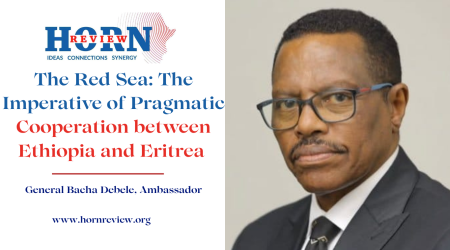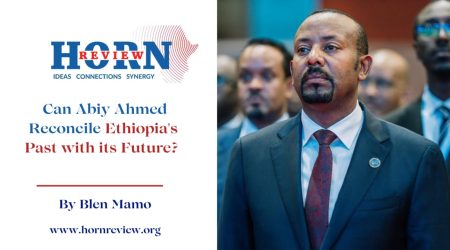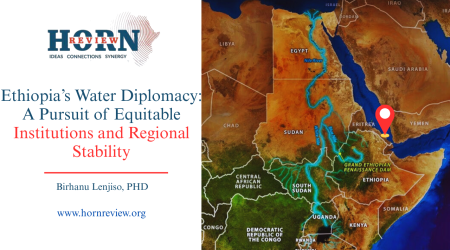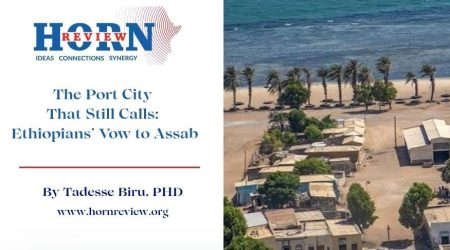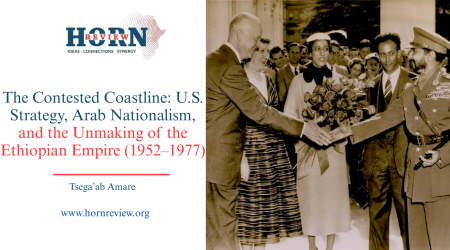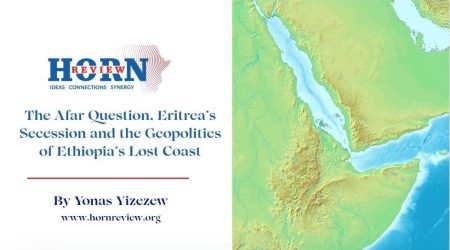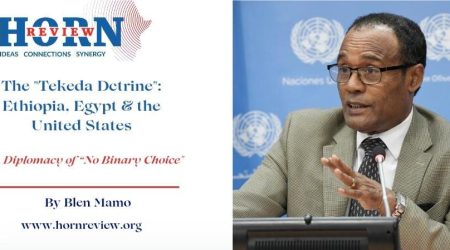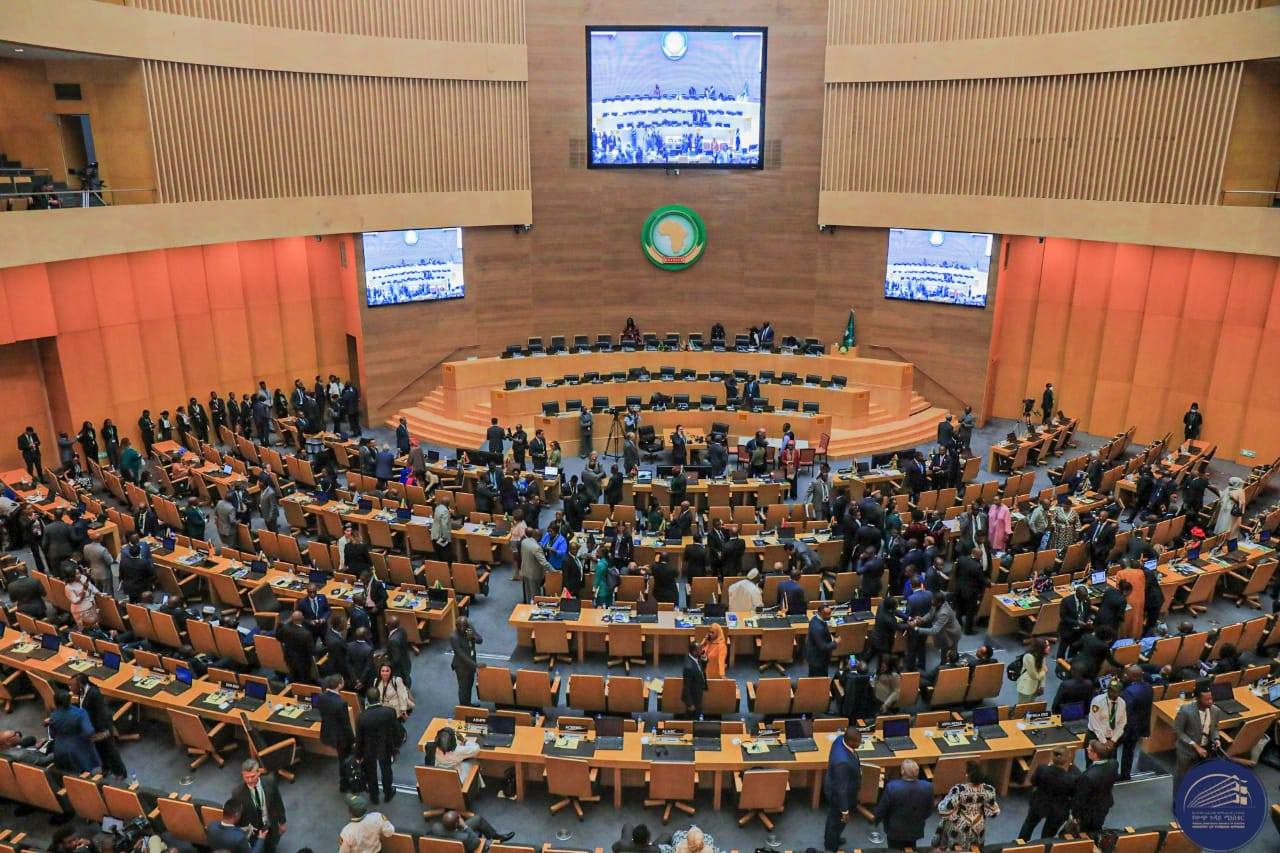
20
Feb
Ethiopia’s Diplomatic Renaissance: Redefining Africa’s Political Future
The AU summit in Addis Ababa, with the press conference by Ambassador Birtikuan Ayano and hosted by Ambassador Nebyat following the completion of meaningful work, was a striking example of Ethiopia taking its place as an increasingly important international economic and diplomatic player. With more than 17,000 attendees, 12,000 foreigners, several crucial African heads of state, ambassadors, and even a king, the event provided a fitting backdrop for Ethiopia’s bracing march onto the world stage.
The Ethiopian government marvelously guided the 38th leader’s conference, and the 46th regular one was an operational success and an expression of political will. Over 35 institutions, in close coordination with the Ministry of Foreign Affairs. Ethiopian Airlines played a critical role in ensuring that 57 chartered diplomatic flights operated seamlessly over a six-day period, with planes parked without disruption. High-level transportation was guaranteed through a fleet of 382 new, high-end vehicles allocated for VVIPs and VIPs, ensuring that every dignitary’s transit was handled with utmost priority.
Prime Minister Abiy’s volunteer team, with its capacity to work in English and French, was central to this success.” This approach avoided standard logistical bottlenecks and reflected a more significant, strategic vision that would turn Addis Ababa into a magnet for global engagement. Building on this capability to demonstrate its preparedness to the world, its impeccable utility services, full power and steady water supply, and stable internet were identified in local reports and diplomatic analyses.
Politically, the event eclipsed its tactical achievements. The summit was a theater in which Ethiopia reaffirmed its Pan-African identity and pledged to a future in which the continent can chart its course to prosperity. The colorful representations of Ethiopian culture on display around Bole Airport and the painstaking organizational efforts around side events, the African Business Forum UN, talks about nutrition commitments and malnutrition, and a high-level session on Africa’s development, to mention a few, were rigorous not merely ceremonial. They signified a conscious endeavor to integrate conventional heritage with contemporary governance. Diplomatic choreography was on display in every element of the event. The seamless processing at immigration and customs, the expedited visa services, and the friendly gestures on arrival emphasized Ethiopia’s ability to control the local logistics and convey the international image.
This degree of organization, along with technological improvements that guarantee safety and security, makes Addis Ababa Africa’s main diplomatic capital, capable of marking a significant realignment of the balance of power in Africa.
At the center of this diplomatic orchestra was a resounding message from Prime Minister Abiy: Ethiopia is prepared to be a hub for discussions and shared growth. His engagement with a range of very different and some even antagonistic leaders, investors, and NGOs during the summit, as well as his support for a vigorous bidirectional discussion by multidisciplinary panel seniors, reflected a no-nonsense statecraft pragmatism. Along with his diplomatic approach, First Lady Zinash Tayachew’s sideway emphasized social services, showing that there should also be a continuity of social welfare as part of its overall narrative.
Ethiopia’s meticulous preparation was evident in every operational aspect of the summit. Over 1,000 journalists received unhindered access, and eight dedicated institutions worked tirelessly around the clock to ensure that every detail, from conference venue readiness to technological enhancements for leader security was flawlessly executed. The palace’s renovation and the symbolic integration of traditional cultural components and modern-day conveniences relayed a potent visual message about Ethiopia’s historical legacy and its aspirations for the future.
The city’s transformation was further underscored by initiatives aimed at cleanliness, infrastructural upgrades, and public safety, factors that not only impressed attendees but also signaled Ethiopia’s potential as an economic and trade hub. The renovations and modernizations, such as those seen in the palace. Additionally, the emphasis on technological enhancements ensured a secure environment for all dignitaries, thereby cementing Addis Ababa’s status as a beacon of innovation and stability in a rapidly changing region.
Ethiopia’s successful orchestration of the AU summit can also represent a paradigm shift in Ethiopia’s international positioning. The strategic use of cultural heritage, technological innovation, and diplomatic agility has set a new standard for how emerging nations can assert their influence on the global stage. More investment in the regional infrastructure and a more inclusive regional dialogue could make Addis Ababa the diplomatic city of Africa and an international capital of political and economic creativity. If this trajectory is to be sustained, it is of utmost importance that the government prioritizes transparency and engagement with a wide range of stakeholders on an ongoing basis, a move that, in the long run, could alter the nation’s positioning in the world order.
By Surafel Tesfaye, Horn Review, Researcher

